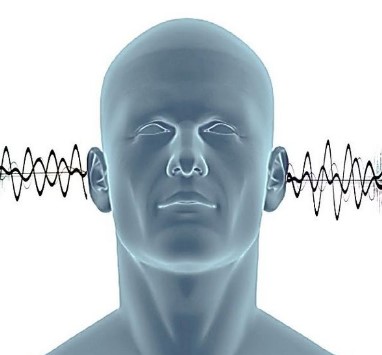Understanding Cervicogenic Hearing Loss and Tinnitus
Table of Contents
Cervicogenic hearing loss and tinnitus are conditions that are less well-known than cervicogenic vertigo, but they can be just as debilitating. If you are experiencing symptoms of these conditions, it’s important to seek medical attention to determine the underlying cause and receive appropriate treatment.
What is Cervicogenic Hearing Loss and Tinnitus?
Cervicogenic hearing loss and tinnitus are conditions that are caused by problems in the neck, such as injuries, degenerative changes, or muscle tension. These problems can lead to changes in blood flow and nerve function that affect the inner ear, resulting in hearing loss or ringing in the ears (tinnitus).
When there is a problem in the cervical spine, such as a herniated disc or inflammation, it can interfere with the transmission of sound signals from the ear to the brain. This can result in hearing loss, which can be temporary or permanent, depending on the severity of the condition. This can also result in tinnitus, which is a perception of sound that is not actually present in the environment, or rather a distorted signal from the vibrations picked that are turned into sound in your brain.
What are the Symptoms?
The symptoms of cervicogenic hearing loss and tinnitus can vary, but they may include:
- Hearing loss or reduced hearing sensitivity
- Ringing, buzzing, or other noises in the ears (tinnitus)
- Dizziness or vertigo
- Neck pain or stiffness
- Headaches
- Tingling or numbness in the arms or hands
What Causes Cervicogenic Hearing Loss and Tinnitus?
There are several possible causes of cervicogenic hearing loss and tinnitus, including:
- Neck injuries, such as whiplash or other traumas
- Degenerative changes in the cervical spine (neck), such as osteoarthritis or herniated discs
- Poor posture or ergonomics
- Muscle tension or spasms in the neck and shoulders
- Impaired blood flow or nerve function in the neck and head
How are Cervicogenic Hearing Loss and Tinnitus Diagnosed and Treated?
Diagnosing cervicogenic hearing loss and tinnitus can be challenging, as these conditions can be caused by a variety of underlying issues. Your doctor may perform a physical exam, order imaging tests (such as X-rays or MRIs), and refer you to an audiologist for hearing tests.
Treatment options for cervicogenic hearing loss and tinnitus may include:
- Physical therapy to improve neck mobility and reduce muscle tension
- Medications to relieve pain, inflammation, or muscle spasms
- Acupuncture or other alternative therapies
- Surgery (in rare cases)
In addition to these treatments, there are several things you can do to help prevent or manage cervicogenic hearing loss and tinnitus:
Maintaining good posture:
Poor posture can lead to muscle tension and strain in the neck and shoulders, which can contribute to cervicogenic hearing loss and tinnitus. To help prevent these conditions, it’s important to maintain good posture throughout the day. This means keeping your head and neck in a neutral position, with your ears aligned over your shoulders and your chin parallel to the floor. Avoid slouching or craning your neck forward, and take regular breaks to stand up, stretch, and move around.
Exercise:
Exercise can also help reduce the risk of cervicogenic hearing loss and tinnitus by improving neck mobility and reducing muscle tension. Simple exercises like neck rotations, shoulder shrugs, and chin tucks can be done at home or at work to help keep your neck and shoulders loose and relaxed. Additionally, balance training exercises, such as standing on a balance board, can help improve proprioception (the body’s awareness of its position in space) and reduce the risk of falls, which can cause neck injuries and exacerbate cervicogenic hearing loss and tinnitus.
Ergonomics:
Proper ergonomics can also play a role in preventing cervicogenic hearing loss and tinnitus. This means setting up your work and home environments in a way that supports good posture and reduces strain on the neck and shoulders. For example, using an ergonomic desk chair, adjusting your computer monitor to eye level, and taking frequent breaks to stretch and move around can all help reduce the risk of neck injuries and muscle tension.
In summary, cervicogenic hearing loss and tinnitus can be caused by a variety of underlying issues, but they are often related to neck injuries, degenerative changes, poor posture, or muscle tension. Treatment options may include physical therapy, medications, or surgery, depending on the underlying cause and severity of the condition. However, taking steps to maintain good posture, exercise regularly, and practice proper ergonomics can also help reduce the risk of developing these conditions and improve overall neck and shoulder health.
If you found this article useful Click here to support Meniere’s Help paypal.me/menieres
References/Further reading:
- Brandt T, Dieterich M. Cervical vertigo – reality or fiction? Audiol Neurootol. 2014
- Treleaven J. Cervicogenic dizziness: a review of diagnosis and treatment. J Orthop Sports Phys Therapy. 2011
- Michiels S, Van de Heyning P, Truijen S, Hallemans A, Wuyts FL. The effect of proprioceptive balance board training for the prevention of falls in elderly people: a prospective controlled trial. Otol Neurotol. 2015
- NIH Cervical hearing loss
Help other sufferers. Are your symptoms cervicogenic in origin? Tell us all about it in the comments box below or email Mike at meniereshelp@gmail.com
